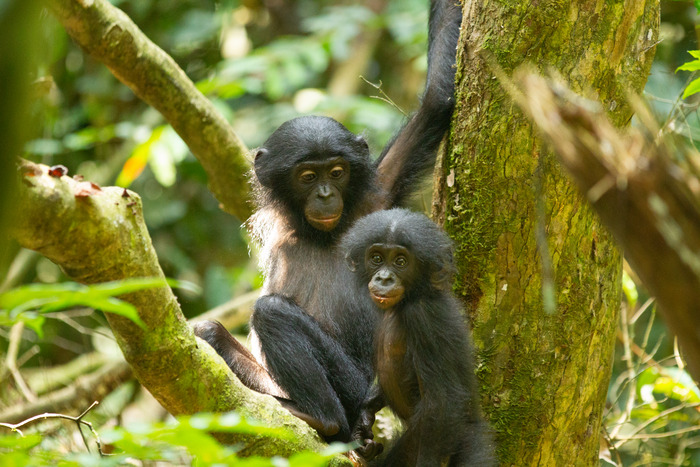Research Highlights
Every month, Leakey Foundation grantees publish research that helps us understand humanity’s past, present, and future.
Read on to learn about new discoveries made possible by generous Leakey Foundation supporters like you! All of the articles below are open-access and free to read.

Understanding variation in social behavior
Various aspects of sociality in mammals are linked with measures of biological fitness such as longevity. Scientists have long wondered how that variation arises.
Leakey Foundation grantee Dr. Susan Perry and colleagues used an advanced statistical method known as the ‘animal model’ to look at social, genetic, and environmental influences on sociality in a long-lived wild primate. They leveraged a longitudinal database spanning 20 years of observation on individually recognized white-faced capuchin monkeys (Cebus capucinus imitator) with a multi-generational pedigree.
Godoy, I., Korsten, P. & Perry, S.E. Genetic, maternal, and environmental influences on sociality in a pedigreed primate population. Heredity (2022).

Investigating near-sightedness in hunter-gatherers
Myopia rates are increasing globally. This epidemic is linked to increased school participation, decreased outdoor activity, and the proliferation of near-work occupations. Previous studies have reported exceptionally low instances of near-sightedness among the Tanzanian Hadza, but is that really the case? With support from The Leakey Foundation, Duncan N. E. Stibbard-Hawkes and Coren L. Apicella built an expanded dataset and looked at how Hadza myopia rates compare to those from other economic/subsistence niches.
Stibbard-Hawkes, D. N. E., & Apicella, C. L. (2022). Myopia rates among Hadza hunter-gatherers are low but not exceptional. American Journal of Biological Anthropology, 1–13

Expansion of time range for DNA from dirt
The Levant is a key land bridge between Africa and Eurasia, but relatively little ancient DNA data has been generated from this region since DNA degrades faster in warm climates. With support from The Leakey Foundation, Dr. Vivian Slon and colleagues analyzed 33 sediment samples from different Paleolithic layers of Sefunim Cave in Israel. They found traces of ancient Cervidae and Hyaenidae mitochondrial DNA. Dating by optical luminescence and radiocarbon indicates that the DNA comes from layers between 30,000 and 70,000 years old, surpassing theoretical expectations regarding the longevity of DNA deposited in such a warm environment.
Slon, V., Clark, J.L., Friesem, D.E. et al. Extended longevity of DNA preservation in Levantine Paleolithic sediments, Sefunim Cave, Israel. Sci Rep 12, 14528 (2022).
Want to support research like this? Donate to The Leakey Foundation today.
